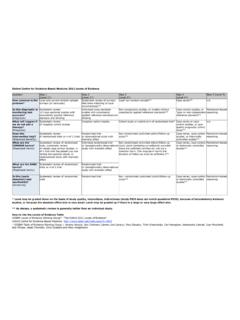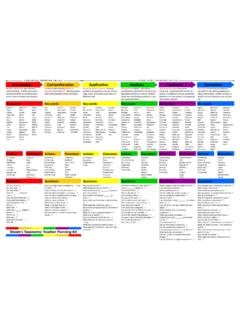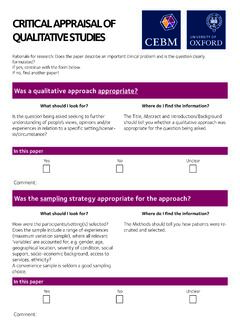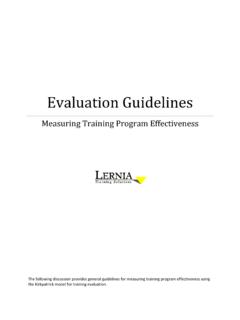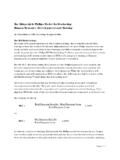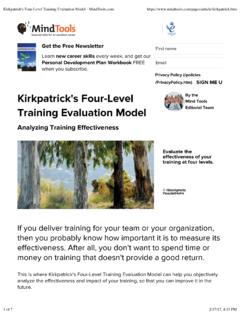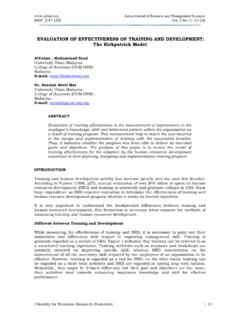Transcription of Beyond Kirkpatrick - CEBM
1 Beyond KirkpatrickPaul StevensonBackground Skills & Knowledge increased, but little changein behaviour. Change training to increase effectiveness Local evaluation did not generate informationto aid the development of future of evaluation Identify if teaching is meeting learners needs Identify if current training is effective Identify areas where teaching can be improved Inform the allocation of resourcesKirkpatrick ModelEvaluation used Kirkpatrick model for basis ofevaluation educational interventionsLevel 1 Learner reactionLevel 2a Modification of learner attitudes & perceptionsLevel 2b Learner acquisition of knowledge & skillsLevel 3 - Change in learner
2 BehaviourLevel 4 - Benefits to the organisation/patient resultingfrom learner performanceKirkpatrick s four levels of evaluation (1967,1994),adapted by Barr et al(2000) Kirkpatrick ModelTendency for declarative outcome measuresShowsifthe intervention has been provides little information aboutwhyLearner FocusedFails to consider contextual/environmental variablesView that training is solely responsible for any outcomeWhat should be Evaluated?Ultimate aim is: Change in BehaviourDiffusion of innovation model , Rogers (1995)Transfer of LearningBaldwin & Ford(1988)transfer of training into areas of influence on transfer :1.
3 Aspects of the course2. Characteristics of the learner3. Features of the work environmentCommon Barriers The most commonly mentioned barriers toEBP are:Learner Personal lack of interest Lack of skills Low self-efficacy Previous experienceTraining Appropriate content Delivery methodEnvironment Organisational culture Insufficient time Lack of resources Lack of support fromcolleagues and managementLET evaluationLewin s(1951)equationB=f (P,E)Behavior is a function of the personandthe environmentAdapting this to evaluate the impact of an educationalintervention we get:B= f (L,E,T)Behavior is a function of.
4 L - Leaner E - Environment T- TrainingRather than focus solely on the impact of the learner on theenvironment,we also measure the impact of the environment on the evaluating the three areas which influencethe transferral of learning we:Truly understand the impact of the trainingIdentify and have a better understanding of thebarriers which exist and can start to Results Declarative to Procedural knowledge. Self-efficacy monthly on-line opportunity for practice. Job Autonomy whole team training eventsFurther
